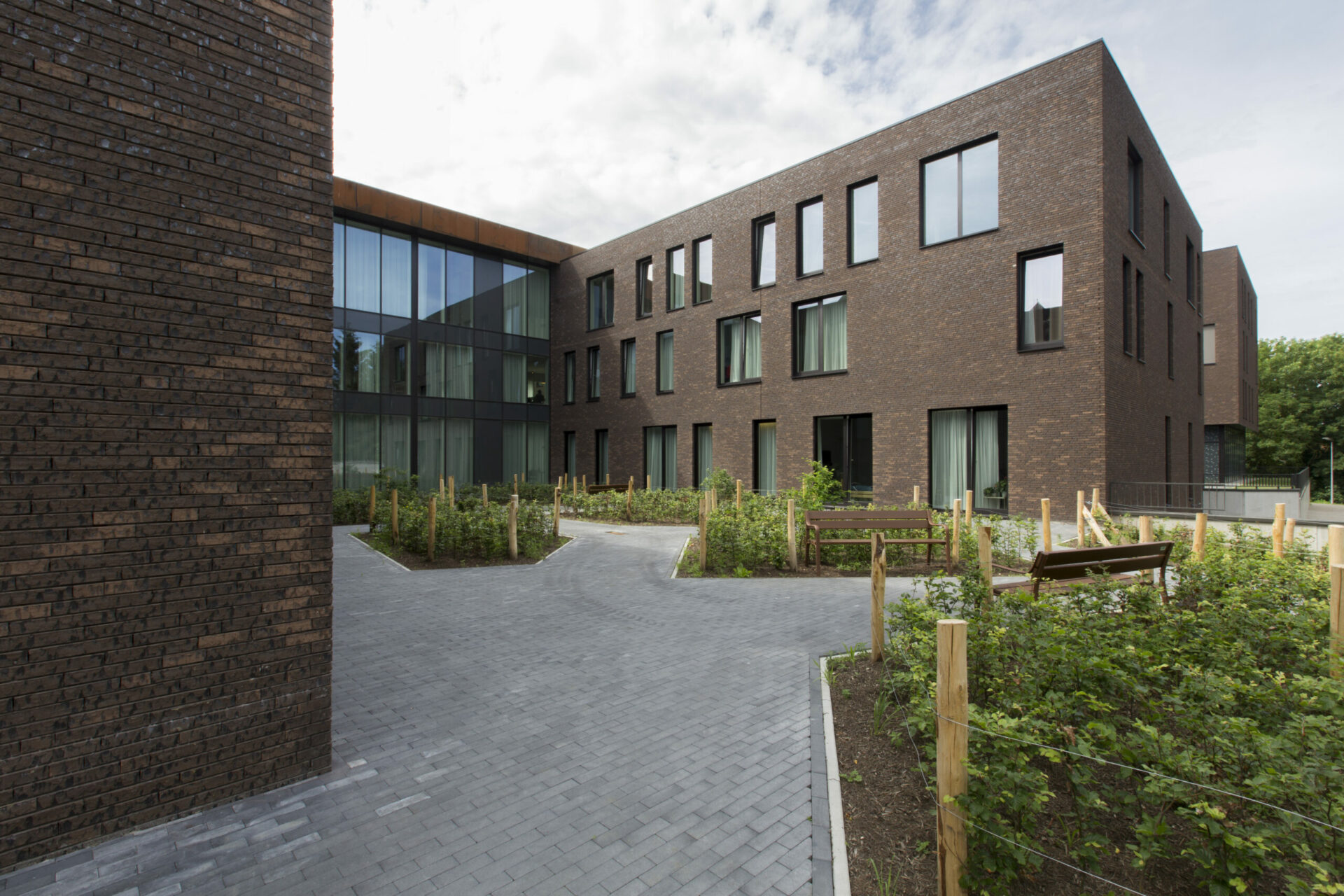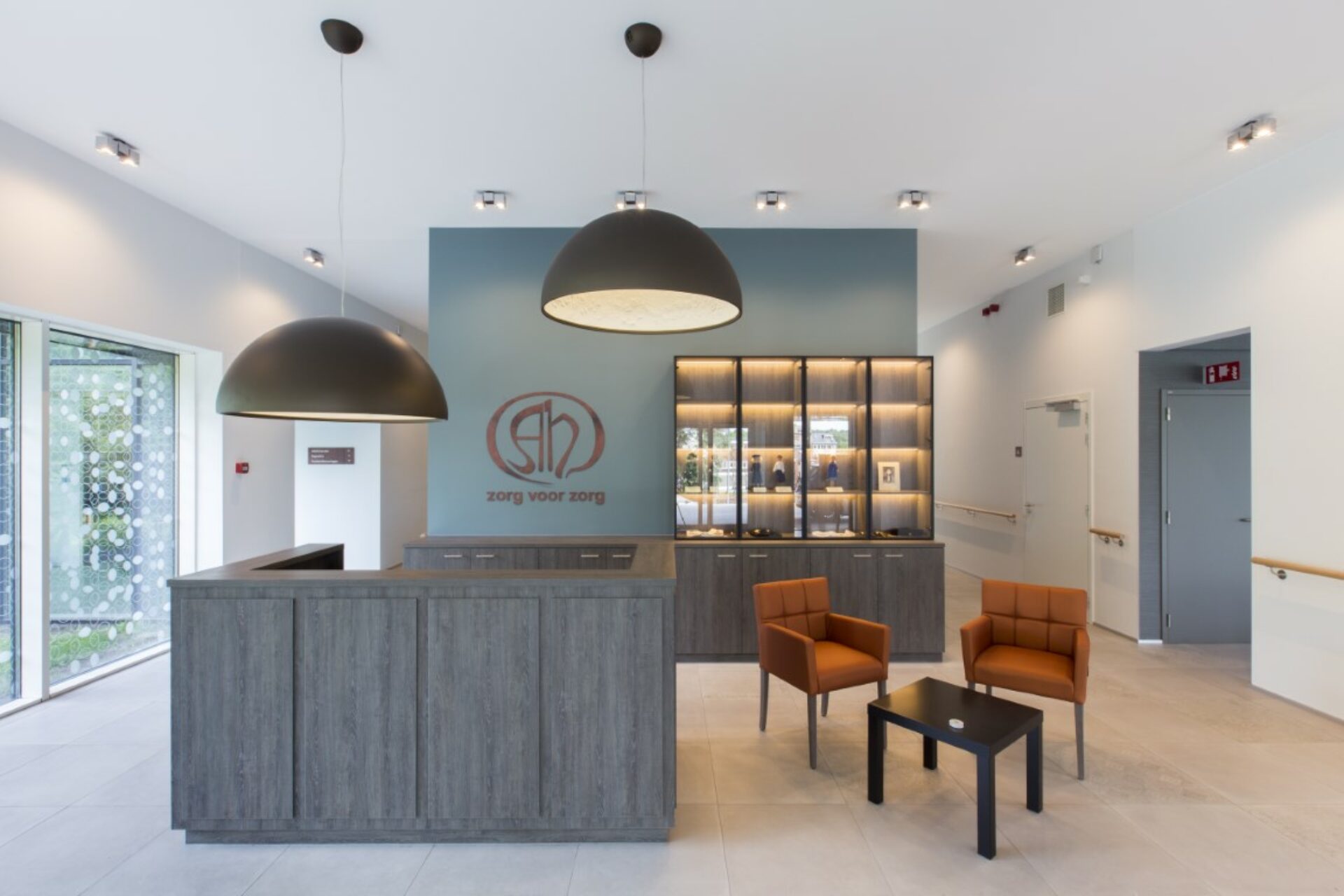new residential care centre of 96 beds + sheltered accommodation units of 27 appartements
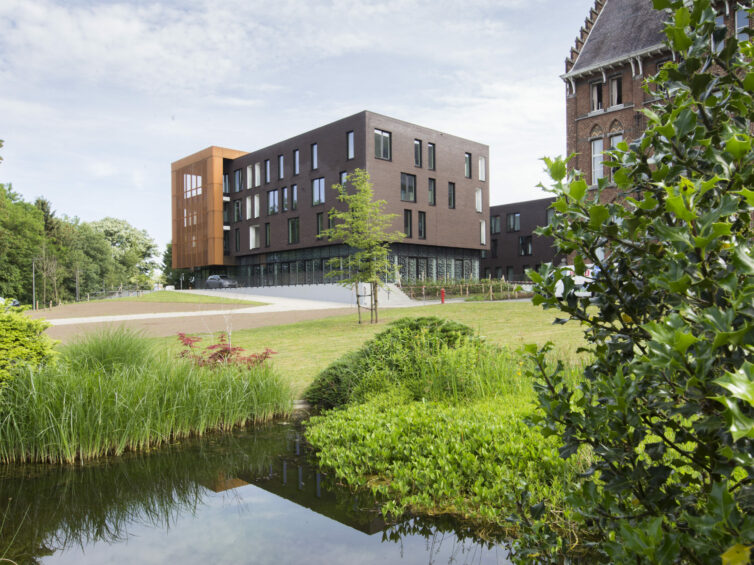
new residential care centre of 96 beds + sheltered accommodation units of 27 appartements

The congregation of the Annunciate sisters of Heverlee was founded in 1787.
Young women provided Christian education at the school for children from disadvantaged families and also cared for the sick and poor. In 1791, these women began to live together in the school and formed a community of sisters. This community was recognised as a religious order in 1833.
In 1893 a wall was built to enclose the estate and in 1894-1896 a neo-Gothic school complex was built, designed by Joris Helleputte. In 1932, a structure was added with the Chapelle du Message de Notre-Dame on the first floor. In 1995, several parts of the complex were protected as historical monuments: the brick wall, the playground with its lime trees, and the Calvarielaan, as well as the Helleput building, and the Van Reeth wing with the Chapelle du Message and the classrooms.
Over the years, the sisters became increasingly dependent on care and the need for comprehensive medical care and attention became more acute. Two buildings that originally housed a community of sisters, Rozenberg and Betanie, built in 1973 and 1986 respectively, were connected by a glass corridor and a residential care centre was created.
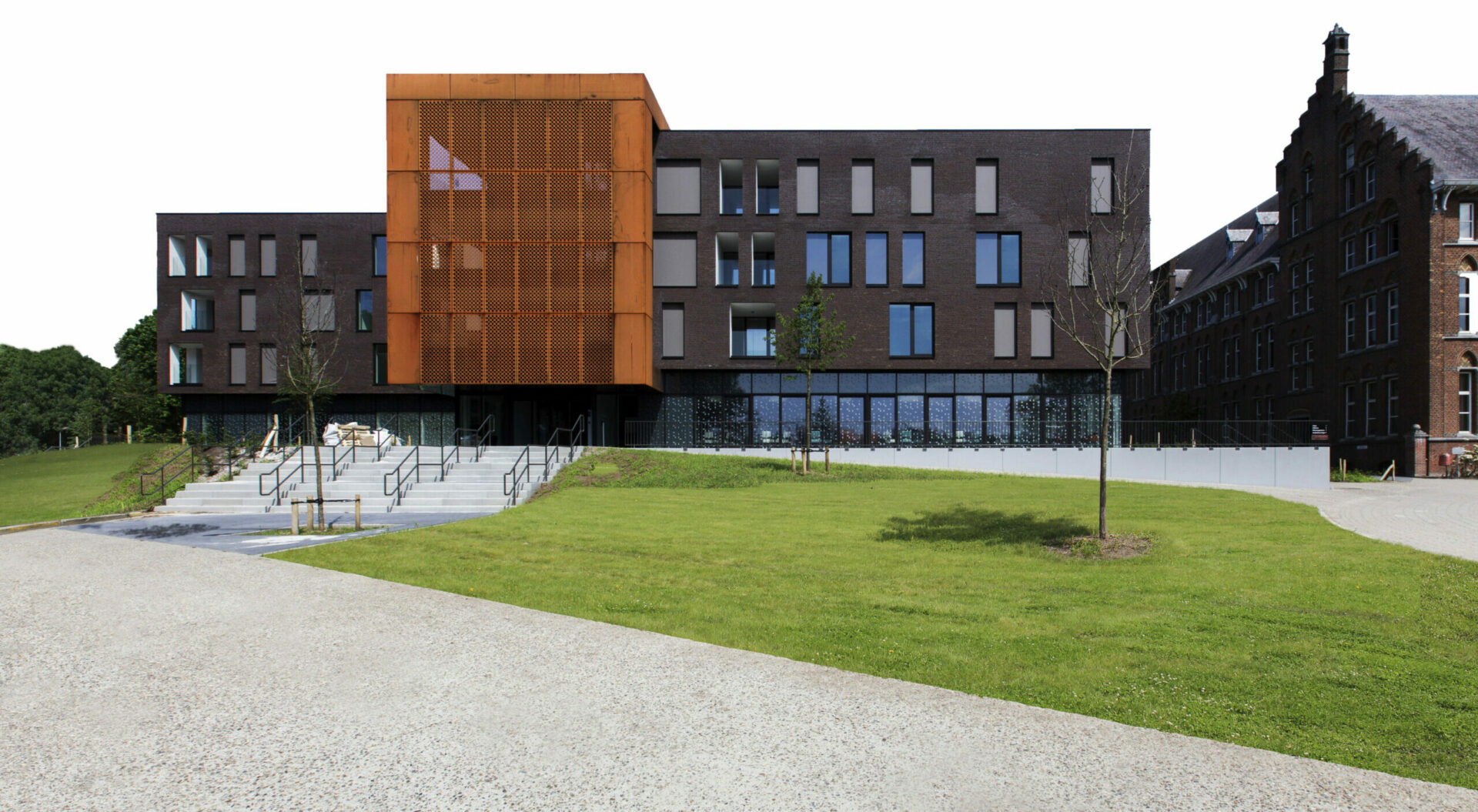
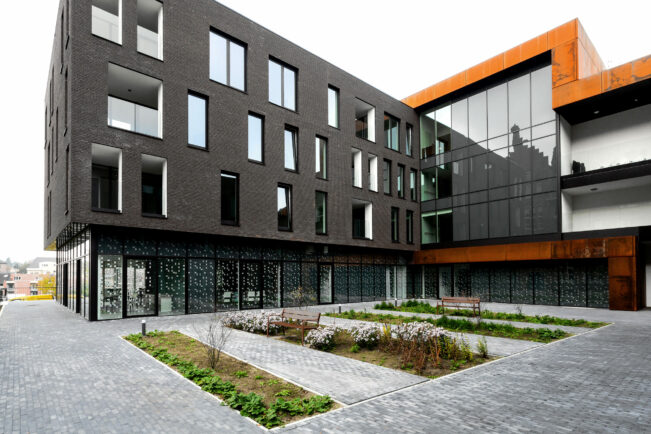
| program | new residential care centre (96 beds) + sheltered accommodation units (27 appartements) |
| client | CSR Annonciades d’Heverlee ASBL |
| address | Naamse Steenweg 355 • 3001 Heverlee |
| building type | care • live |
| status | completed |
| expertises | architectureinterior architecturebimlandscape designproject managementhealth & safety coordinationprogramming |
| offices | antwerp |
| size | 11.967 m² |
| team | • client: CSR Annonciades d’Heverlee ASBL • structural engineering: Fraeye & Partners • technical engineering: SWECO • safety co-ordination: MBconsult • contractor: AM Willemen · Van Roey • landscape designer: Omgeving |
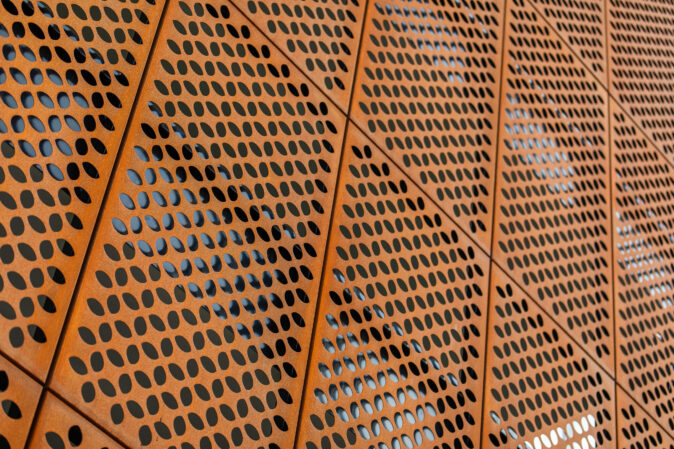
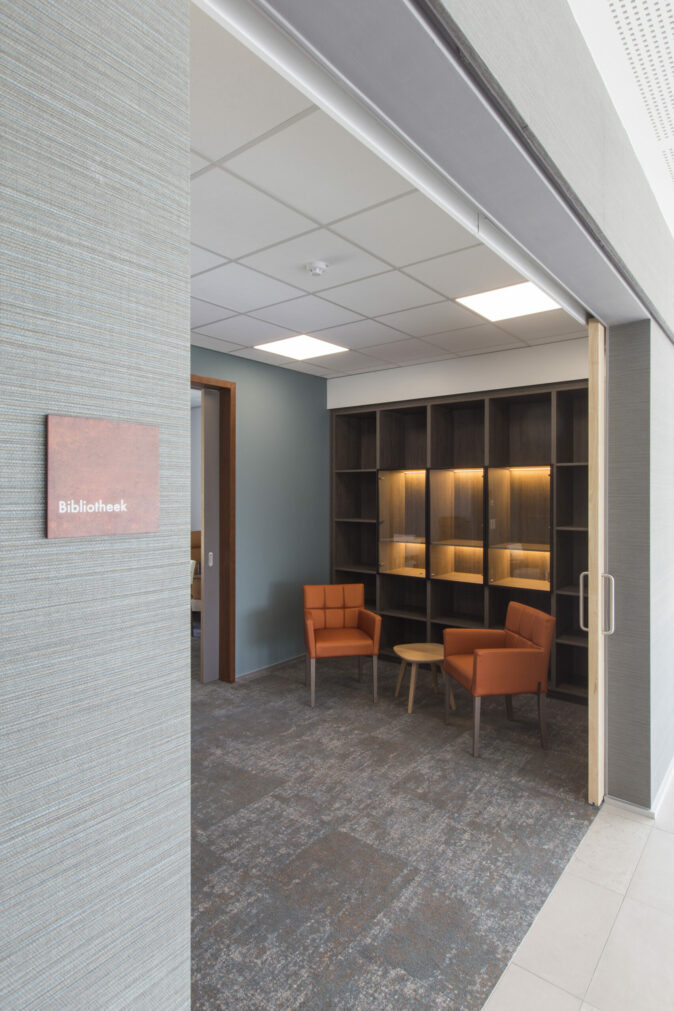
The Annonciades Residential Care Centre in Heverlee is situated in a green environment on the H. Hartinstituut campus of the Annunciate sisters in Heverlee. The location on a 60-hectare site is unique, but the two buildings are outdated and no longer meet contemporary standards requirements. In addition, the campus houses a crèche, a kindergarten and a primary school, a secondary school, a boarding school, two faculties of the KHL (Katholieke Hogeschool Leuven), buildings of the sisters’ communities and, finally, buildings of a livestock and agricultural company.
The contracting authority has formulated a vision of care that gives preference to modestly sized residential groups. The smallest unit was determined by the client at eight residents.
Nonetheless, the building was designed not to exclude large-scale use:
The complex site presented an additional challenge. The fairly limited area was largely occupied by the existing residential care centre buildings. These were in use and could only be demolished after the residents had moved into the new building. Therefore, the new building was built in two phases.
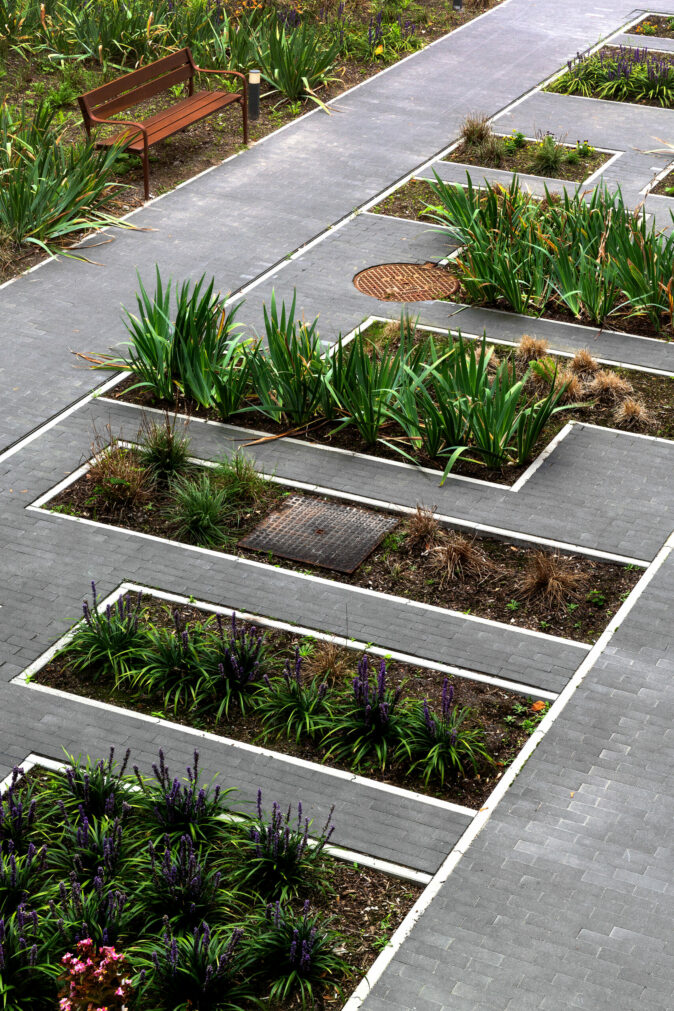
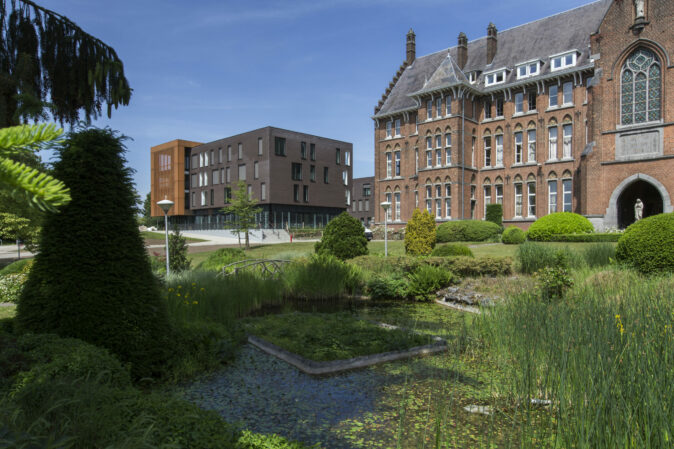
The project owner attaches great importance to sustainability, and therefore consciously opted for a low-energy building. This choice has had an impact on the materials used (thick insulation, triple glazing, etc.) and on the technologies chosen. Upon the initiative of the design team, an additional sustainability study was carried out in the design phase, based on a dynamic energy simulation. On the basis of this study, the traditional heating system was replaced by the principle of concrete core activation (CCA). This reduces energy consumption and increases the thermal comfort of the users. The system is powered by a BTES (borehole thermal energy storage) field that has been installed around the building. In addition, the building is equipped with a pellet stove system, solar panels for hot water, and photovoltaic panels for electricity production.
The sustainability study also showed that the additional study costs and investment will be largely recovered in the long term. This is therefore not only an ecological choice, but also a financially sustainable one for the project owner.
There are several elements in the assignment that presented a challenge for the project budget: the two-phase construction, the requirement of a modest size, and the specific historical context with the corresponding expectations in terms of aesthetics and use of materials, etc.
Nevertheless, the design team successfully met this challenge and delivered a project within the budget set by the project owner. This required careful budgetary monitoring throughout the project phases and a thorough iterative design process, in which choices were repeatedly questioned to achieve maximum cost effectiveness, without deviating from the original principles or the final quality that was sought.
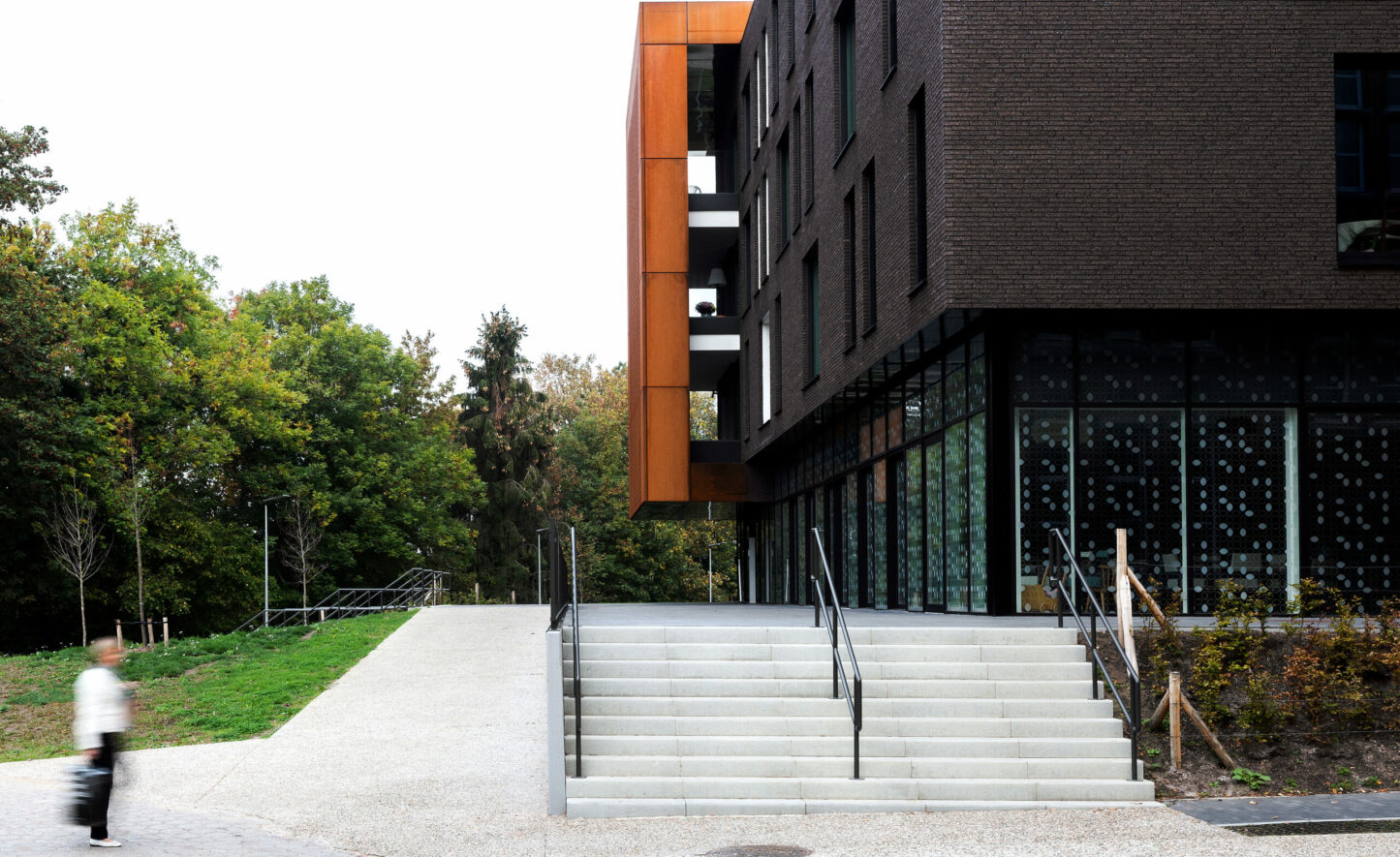
The design process of the Annonciades residential care facility is entirely based on BIM. The digital model that was produced in the design phase consisted of different models for each field of knowledge:
The different models can be used independently of each other, so that each design partner can work independently of the others.
Of course, they can also be combined to co-ordinate the different areas and thus achieve a fully integrated design. assar architects played a central role in the design team, coordinating the different models.
On site, communication between the construction partners was mainly carried out using 2D drawings, as none of the contractors had made sufficient progress in implementing BIM. Nevertheless, the digital model was a crucial tool for the design team for providing a rapid response to questions from the contractors and for providing additional information and working drawings when needed.
In the background, the contractors were gradually making the transition to BIM for the development of the as-built file. The design model serves as a reference in this respect.
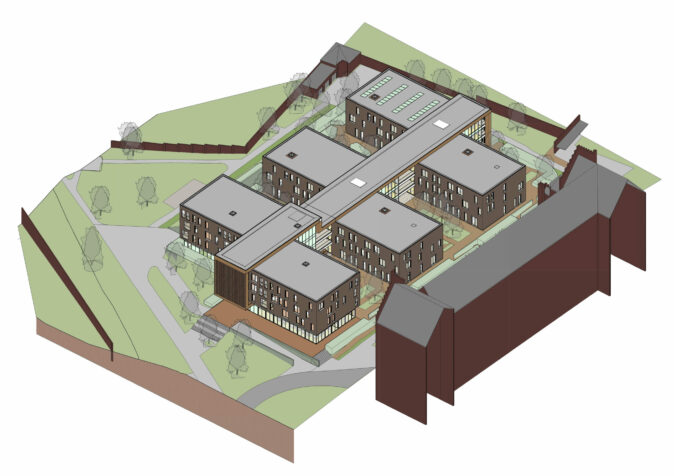
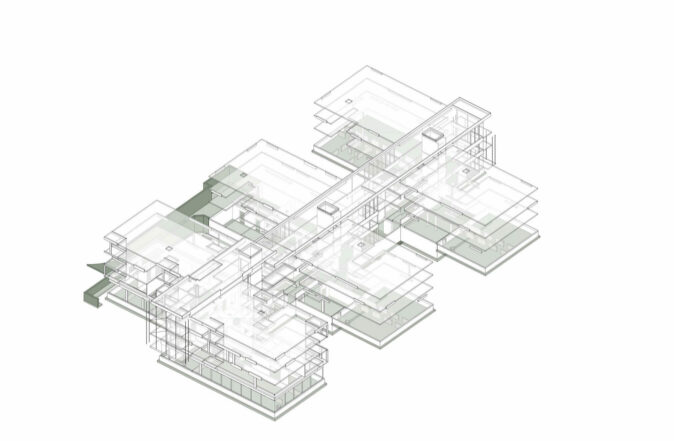
BIM model architecture BIM model stability
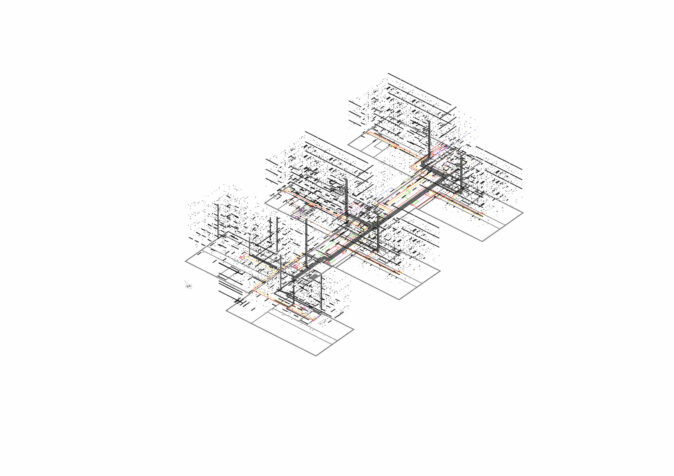
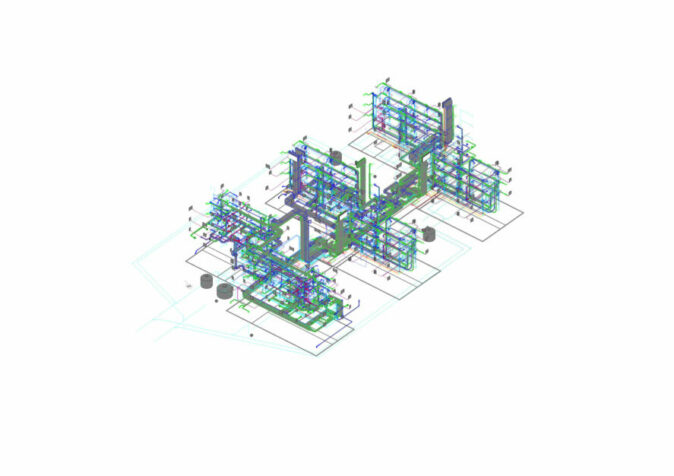
BIM model electricity BIM model hvac sanitary
assar has been developing BIM models in Autodesk Revit since 2010. Not only architecture, but also stability and technologies are constantly being developed with BIM. We are open to OpenBIM and therefore also have experience in integrating BIM models from other software packages with the open IFC format.
Since 2014, there has been a direct and dynamic link between the BIM model, the specifications and quantity survey via the Geo.IT Lastenboek Link program, which Assar architects helped to develop. This link is continuously being improved and expanded.
Following completion and acceptance of the project, the lead company (shell and finishing) and the technology companies (sanitary, HVAC, electrical) provided an as-built model in BIM format. In contrast to the design model, these models show all the adaptations applied during execution, as well as the materials used with references to the installer, technical specifications, maintenance instructions, etc.
The project owner currently has no intention of actively managing or updating the BIM model itself following acceptance. Due to the high price of software packages and the lack of expertise in using them fully, the threshold for participation in the BIM experience is still too high. Nevertheless, the model will certainly have a useful role as a reference for the construction process, for the management and maintenance of the building. When the building is adapted or transformed during its lifetime – which is inevitable, given the rapid evolution of the care sector – the digital model will also provide significant added value to the design team.
The performance expectations for residential care centres are increasing every year.
Not only is legislation on sustainability and safety becoming more stringent, but building owners are also constantly striving to improve the standards of living and working comfort of residents and staff. With BIM, assar architects can not only provide a solution to these questions, but also help to stimulate innovation itself.
For the Annonciades residential care facility, for example, an additional sustainability study with dynamic energy simulation was carried out at the initiative of the design team. For this purpose, the BIM model was linked to the EnergyPlus simulation software. Based on the study, the traditional heating system was replaced by the principle of concrete core activation (CCA). This technology enables an extensive network of heating and cooling pipes to be integrated into the concrete floor slabs in order to actively use the concrete as a thermal buffer. This reduces energy consumption and increases thermal comfort for users. The system is powered by a BTES (borehole thermal energy storage) field that has been installed around the building. The design and implementation requires good coordination between the various designers and contractors, and adaptation to the traditional construction sequence, in which the shell precedes the technical installations.
The study has also shown that the additional design costs and investments will be largely recovered in the long term. It is therefore not only an ecological choice, but also a financially sustainable one for the project owner.
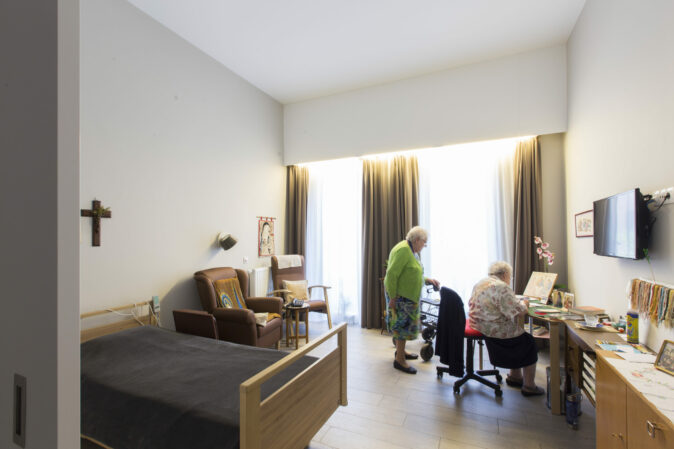
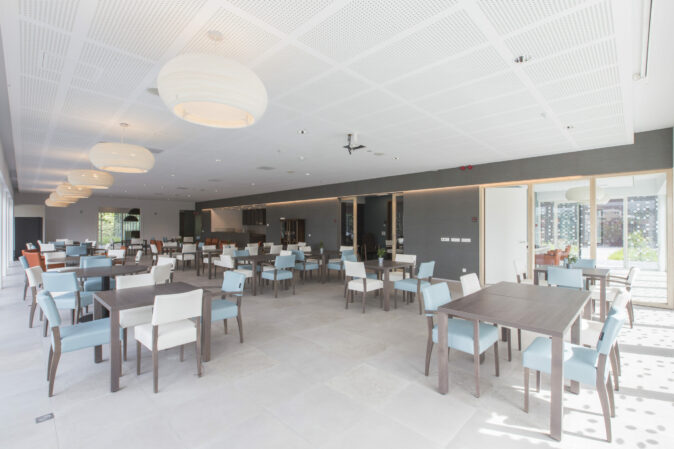
The use of BIM in the design process requires a significant investment from the design team. Indeed, a good digital model requires a significant amount of data entry and coordination. However, the many benefits provided more than justify this investment.
Firstly, the exchange of (accurate) information between the design partners is much easier and the various design areas can be coordinated more easily. Potential construction defects are avoided through conflict detection.
In addition, less work is required to prepare the construction documents, as the specifications and quantities can be linked directly to the model. This means that all documents are always up to date, which reduces the risk of errors. In addition, when considering different implementation options, an overview of their consequences is immediately available.
This is also a clear benefit during the implementation phase. At any time, the project can be clarified on the basis of additional execution plans, which would be very time-consuming without BIM. Because of the extra co-ordination required in the design phase, fewer changes are needed on site. If adjustments are made, they can be coordinated immediately in 3D.
Finally, the use of BIM also has an important added value in terms of sustainability. The information stored in the BIM model is retained throughout the life of the building. When the building reaches the end of its life, this information can be used to dismantle, reallocate, recycle, or process the building components and materials in a sustainable way. Thus, sustainability is not limited to the design and use of the building. We also refer to the benefit described in the “Innovative character” section.
